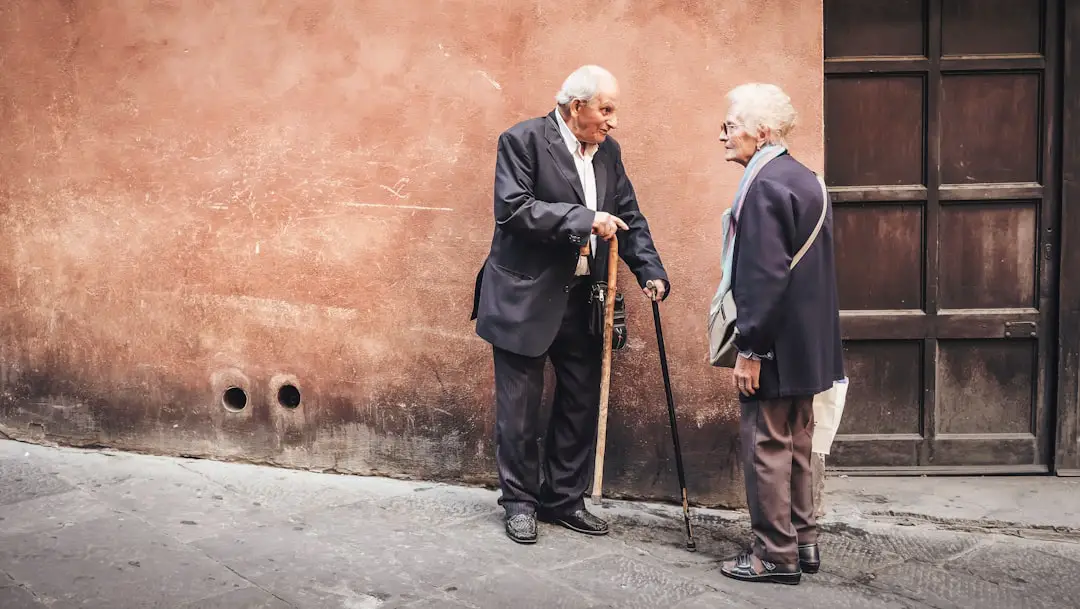Support our educational content for free when you purchase through links on our site. Learn more
How Are You in Spanish? 10 Essential Phrases to Connect Like a Local! 🇪🇸

Have you ever found yourself in a conversation with a Spanish speaker and felt a little lost when it came to greetings? 🤔 You’re not alone! Whether you’re traveling to Spain, mingling at a Latin American fiesta, or simply trying to impress your Spanish-speaking friends, knowing how to ask “How are you?” can open doors to deeper connections. In this article, we dive into 10 essential phrases that will not only help you navigate greetings but also enrich your conversations with cultural insights and variations from different Spanish-speaking regions.
Did you know that in some cultures, a simple greeting can set the tone for the entire interaction? For instance, in Spain, it’s common to greet everyone individually when entering a room—imagine the warmth of that! 🌞 So, if you’re ready to elevate your Spanish skills and make a lasting impression, keep reading to discover the nuances of greetings that will have you sounding like a local in no time!
Key Takeaways
- Master the Basics: Knowing how to say “How are you?” in both formal and informal contexts is crucial for effective communication.
- Explore Variations: Different Spanish-speaking countries have unique ways of greeting, such as ¿Qué onda? in Mexico or ¿Cómo andás? in Argentina.
- Cultural Significance: Greetings are a reflection of cultural values, emphasizing respect and connection.
- Engage with Responses: Always reciprocate greetings to show interest and politeness.
- Practice Makes Perfect: Regular practice and exposure to native speakers will boost your confidence and fluency.
Ready to dive deeper into the world of Spanish greetings? Check out our recommended Spanish language books on Amazon to enhance your learning journey! 📚✨
Table of Contents
- Quick Tips and Facts about “How Are You” in Spanish
- The Evolution of Greetings: A Brief History of “How Are You” in Spanish
- Formal Ways to Say “How Are You” in Spanish
- Informal Ways to Say “How Are You” in Spanish
- Responding to “How Are You” in Spanish: Common Replies
- Regional Variations in Asking “How Are You” in Spanish
- Cultural Insights: The Importance of Greetings in Spanish-Speaking Countries
- Tips for Mastering Spanish Greetings and Small Talk
- Common Mistakes to Avoid When Asking “How Are You” in Spanish
- Fun Facts About Spanish Greetings You Didn’t Know
- Conclusion
- Recommended Links
- FAQ
- Reference Links
1. Quick Tips and Facts about “How Are You” in Spanish
Want to greet someone in Spanish like a pro? ✨ Is “Buenos Días” a Good Morning or a Good Day? Discover 50 Ways to Greet in Spanish! 🌞 Here are some quick tips and facts to get you started:
- Formal vs. Informal: Spanish, like many languages, distinguishes between formal and informal greetings. Use usted for formal situations (talking to elders, superiors, or strangers) and tú for informal ones (friends, family, children).
- Beyond “¿Cómo estás?”: While “¿Cómo estás?” is common, there’s a whole world of Spanish greetings! Explore regional variations and slang to spice up your conversations.🌶️
- Response Etiquette: Always reciprocate the greeting! Asking “And you?” is considered polite. A simple “¿Y tú?” or “¿Y usted?” will do.
- Body Language Matters: Pair your verbal greeting with a smile, a nod, or even a beso (kiss on the cheek) in some cultures. Check out our Spanish Cultural Insights category for more.
2. The Evolution of Greetings: A Brief History of “How Are You” in Spanish

Ever wondered where these greetings come from? 🤔 Let’s take a quick trip back in time! The evolution of greetings in Spanish is fascinating. From formal pronouncements to the casual slang of today, the way we ask “How are you?” reflects societal changes. Formal greetings like “¿Cómo está usted?” have roots in courtly speech, emphasizing respect and social hierarchy. Over time, informal variations like “¿Qué tal?” and “¿Cómo estás?” emerged, reflecting a shift towards more egalitarian social interactions. This evolution mirrors broader changes in Spanish society and culture. For more on language evolution, see Spanish Language Learning.
3. Formal Ways to Say “How Are You” in Spanish
First impressions matter! Here’s how to make a good one in formal settings:
- ¿Cómo está usted?: This is the most common formal greeting. It directly translates to “How are you?” and is suitable for most situations.
- ¿Cómo se encuentra?: This translates to “How are you finding yourself?” and is often used to inquire about someone’s well-being, especially if they’ve been unwell.
- ¿Qué tal está?: A slightly less formal option, this translates to “How are you doing?” or “What’s up?” but with a polite tone. It’s versatile and can be used in both formal and semi-formal contexts.
4. Informal Ways to Say “How Are You” in Spanish
Let loose with these informal greetings! Perfect for chatting with friends and family:
- ¿Cómo estás?: This is the go-to informal greeting, equivalent to “How are you?”
- ¿Qué tal?: Short, sweet, and versatile, “¿Qué tal?” can mean “What’s up?”, “How’s it going?”, or simply “How are you?”.
- ¿Cómo te va?: Similar to “¿Cómo estás?”, this translates to “How’s it going?” and is common in many Spanish-speaking countries.
- ¿Qué pasa?: Meaning “What’s happening?”, this is a casual way to greet friends and acquaintances.
- ¿Qué onda? (Mexico): This slang greeting is similar to “What’s up?” See our Spanish Vocabulary category for more slang.
5. Responding to “How Are You” in Spanish: Common Replies
Don’t just ask, respond! Here are some common replies to “¿Cómo estás?” and other greetings:
- Bien, gracias. ¿Y tú?: “Fine, thank you. And you?” – A classic and polite response.
- Muy bien, gracias. ¿Y usted?: “Very well, thank you. And you?” – The formal version of the above.
- Regular: “So-so” – For those days when you’re feeling meh. 🤷♀️
- Mal: “Bad” – If you’re having a rough day, it’s okay to be honest.
- ¡Genial!: “Great!” – Share your enthusiasm! 😄
6. Regional Variations in Asking “How Are You” in Spanish
Spanish is a diverse language! Here’s a peek into regional variations:
- Spain: “¿Qué tal?” is very common, as is “¿Qué hay?”.
- Mexico: “¿Qué onda?” is a popular slang greeting.
- Argentina: You might hear “¿Cómo andás?” (informal) or “¿Qué hacés?” (What are you doing?).
- Colombia: “¿Qué más?” (What else?) is a common way to ask how someone is doing.
7. Cultural Insights: The Importance of Greetings in Spanish-Speaking Countries
Greetings are more than just words; they’re a cultural cornerstone. In Spanish-speaking cultures, greetings are essential for building rapport and showing respect. They’re often accompanied by physical gestures like hugs, handshakes, or besos. The formality of the greeting depends on the relationship and the context. For more cultural insights, explore our Spanish Cultural Insights category.
8. Tips for Mastering Spanish Greetings and Small Talk
Ready to take your Spanish greetings to the next level? 🚀
- Practice Makes Perfect: Rehearse different greetings and responses out loud. Try our Spanish Conversation Practice for helpful exercises.
- Listen and Learn: Pay attention to how native speakers greet each other in different situations. Movies, TV shows, and music are great resources. 🎧
- Embrace the Culture: Understanding the cultural context behind greetings will help you use them appropriately.
- Don’t Be Afraid to Ask: If you’re unsure about the right greeting to use, ask a native speaker! Most people are happy to help. 😊
9. Common Mistakes to Avoid When Asking “How Are You” in Spanish
Even seasoned Spanish learners can stumble! Here are some common pitfalls to avoid:
- Mixing up Formal and Informal: Using tú with someone you should address with usted can be seen as disrespectful. Conversely, using usted with a friend can sound overly formal and distant.
- Forgetting to Reciprocate: Always ask “And you?” after greeting someone. It shows politeness and genuine interest.
- Overthinking It: Don’t get bogged down by grammar rules. A simple “Hola, ¿qué tal?” is often enough. Relax and enjoy the conversation! Find more helpful resources in our Spanish Language Resources category.
10. Fun Facts About Spanish Greetings You Didn’t Know
Did you know…?
- In some Spanish-speaking countries, it’s common to greet everyone individually when entering a room, even if it’s a large group.
- The double kiss greeting (dos besos) is common in Spain and some Latin American countries, but not all. Air kisses are usually placed on the cheek, not directly on the lips.
- Some Spanish greetings, like “¿Qué cuentas?”, literally translate to “What are you counting?” but are used to mean “What’s up?” or “What’s new?”.
Conclusion

In summary, mastering how to say “How are you?” in Spanish is not just about the words; it’s about understanding the cultural nuances and the context in which you use them. From formal greetings like ¿Cómo está usted? to the casual ¿Qué tal?, each phrase opens the door to deeper connections with Spanish speakers.
Positives:
- A wide variety of expressions allows for flexibility in communication.
- Understanding regional variations enriches your language skills and cultural appreciation.
- Engaging in small talk can lead to meaningful conversations and relationships.
Negatives:
- The distinction between formal and informal can be confusing for beginners.
- Misusing greetings can lead to misunderstandings or come off as disrespectful.
Overall, we confidently recommend diving into these greetings and practicing them regularly. The more you use them, the more natural they will feel! So, go ahead, greet someone in Spanish today and see where the conversation takes you! 🌟
Recommended Links
- 👉 Shop Spanish Language Books on Amazon:
FAQ

How are you in Spanish casual?
Casual greetings in Spanish include phrases like ¿Cómo estás?, ¿Qué tal?, and ¿Cómo te va?. These expressions are commonly used among friends and family, making them perfect for informal settings. They convey a friendly tone and invite further conversation.
What to say instead of “estoy bien”?
Instead of saying “estoy bien” (I’m fine), you can use:
- “Estoy genial” (I’m great!)
- “Todo bien” (Everything’s good)
- “Bastante bien” (Pretty good)
- “No me quejo” (I can’t complain)
These alternatives can add variety to your responses and reflect your mood more accurately.
Read more about “How Do You Say Good Morning in Spanish? 50 Creative Ways to Brighten Your Day! ☀️”
What is another way to say “how are you?” in Spanish?
Another way to say “how are you?” in Spanish is “¿Cómo te sientes?” which translates to “How do you feel?” This phrase can be used when you want to inquire about someone’s emotional or physical state, showing a deeper level of concern.
How do you respond to Como estás in Spanish?
When someone asks “¿Cómo estás?”, you can respond with:
- “Estoy bien, gracias. ¿Y tú?” (I’m fine, thank you. And you?)
- “Todo bien, gracias.” (Everything’s good, thanks.)
- “Regular.” (So-so.)
These responses not only answer the question but also invite the other person to share how they are doing.
Reference Links
- ThoughtCo: How Are You Today (Cómo estás?).
- Spanish Explorer
- Preply: How to Ask “How Are You?” in Spanish
Dive into these resources to further enhance your understanding of Spanish greetings and cultural nuances! 🌍✨

